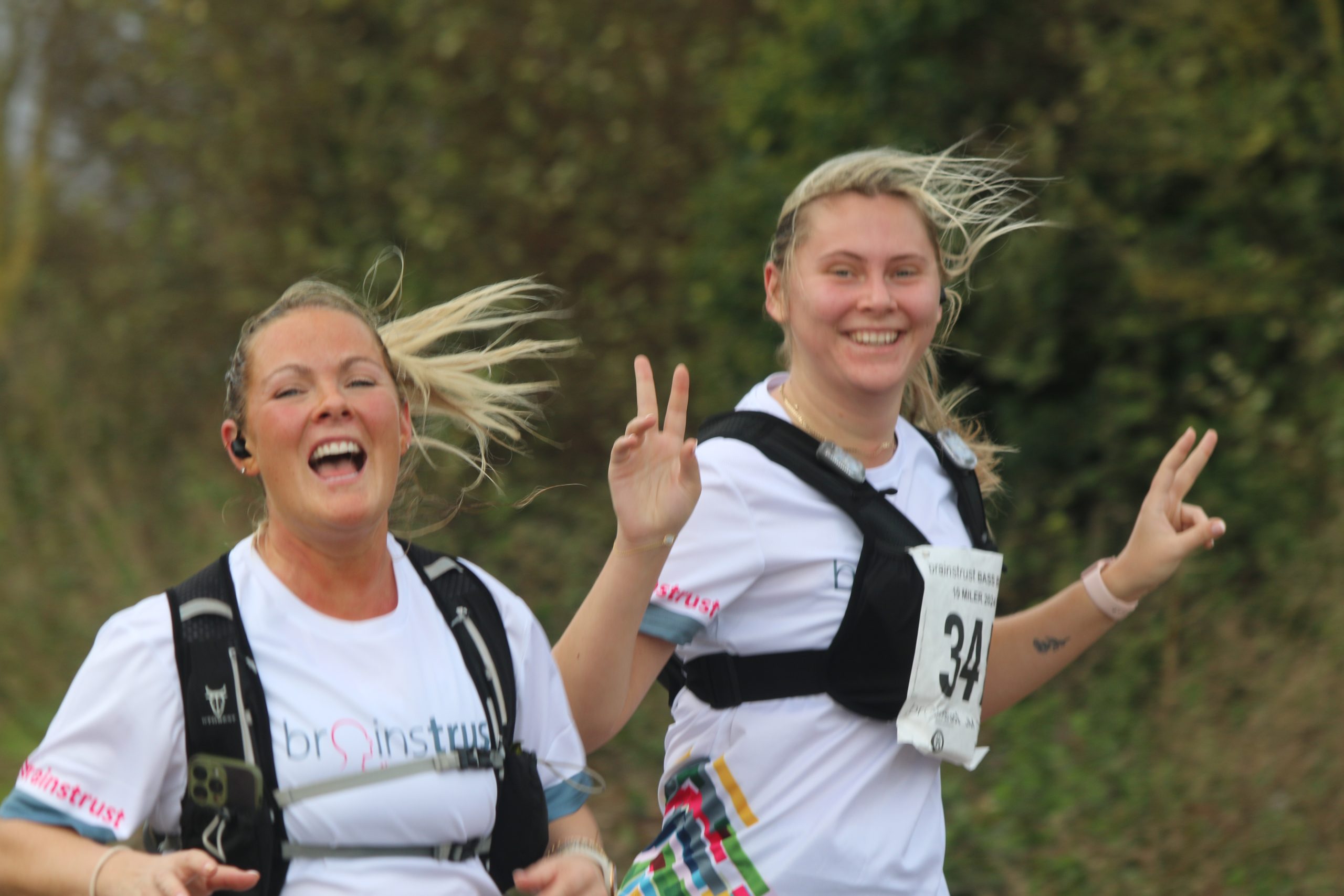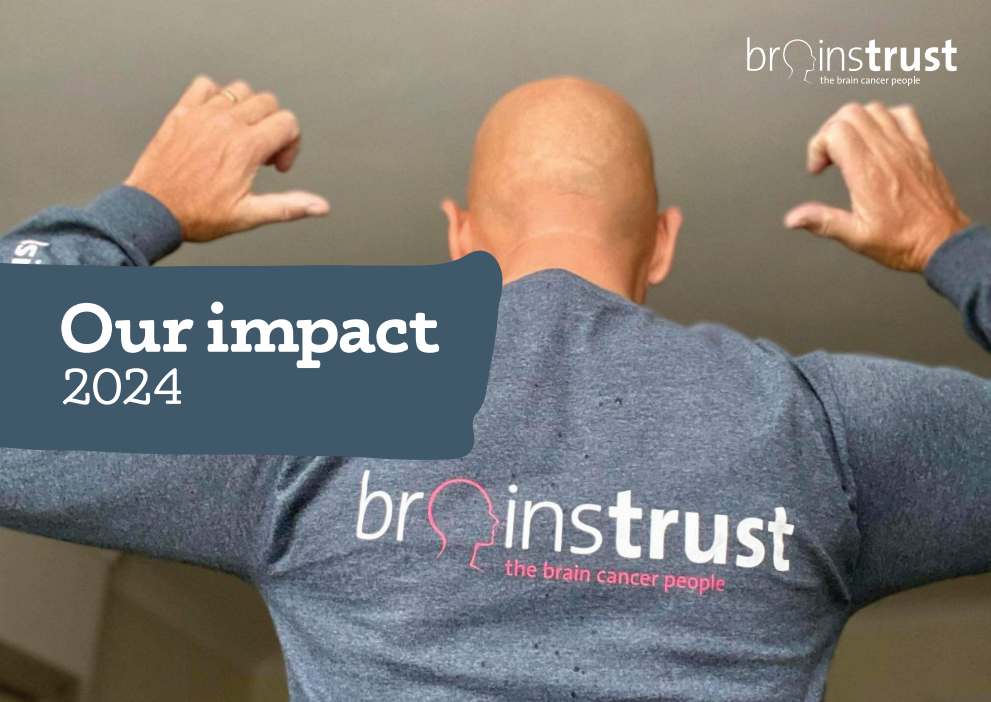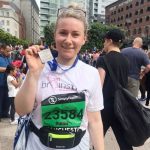
brainstrust Bass Belle 10 miler 2025 entry list
Race registrations
The registration list is updated twice weekly.Click here to go back to the event home page.
| 1 | Martin | Holt | |||||||||||||
|---|---|---|---|---|---|---|---|---|---|---|---|---|---|---|---|
| 2 | Giuseppe | Guarino | BlueEagle043 | ||||||||||||
| 3 | Nhenze | Abias | BlueEagle043 | ||||||||||||
| 4 | Marius | Sumanara | |||||||||||||
| 5 | Jenny | Klaassen | Royston Runners | ||||||||||||
| 6 | Allesio | LiVolsi | Royston Runners | ||||||||||||
| 7 | Julie | Pederson | |||||||||||||
| 8 | Michael | Epstein | Freedom Tri | ||||||||||||
| 9 | David | Cran | |||||||||||||
| 10 | Sara | Morrison | |||||||||||||
| 11 | David | Lamb | |||||||||||||
| 12 | Georgina | Thorpe | REC Runners | ||||||||||||
| 13 | Simon | Brown | Royston Runners | ||||||||||||
| 14 | Paul | Richardson | Bishops Stortford Running Club | ||||||||||||
| 15 | Rebecca | Townsend | |||||||||||||
| 16 | Lennie | Cant | Stevenage Striders | ||||||||||||
| 17 | Andy | Fryatt | Newmarket Joggers | ||||||||||||
| 18 | Francine | Dasseville | Newmarket Joggers | ||||||||||||
| 19 | James | Sleat | |||||||||||||
| 20 | Tom | Elton | Newmarket Joggers | ||||||||||||
| 21 | Tamsin | Cromwell | Royston Runners | ||||||||||||
| 22 | Michelle | Scholfield | |||||||||||||
| 23 | Ben | Spanos | Bishops Stortford Running Club | ||||||||||||
| 24 | Louise | Stanton | |||||||||||||
| 25 | Bibi | DaLacey-Mould | Freedom Tri | ||||||||||||
| 26 | Paul | Phillips | |||||||||||||
| 27 | Jennifer | Garrett | |||||||||||||
| 28 | Emily | Symington | |||||||||||||
| 29 | Cheryl | Barsdell | Shefford Runner | ||||||||||||
| 30 | Daniel | Brown | |||||||||||||
| 31 | Amanda | Day | |||||||||||||
| 32 | Matthew | Stanford | |||||||||||||
| 33 | Matthieu | Militon | Bishops Stortford Running Club | ||||||||||||
| 34 | Cat | Strawbridge | Steeple Chasers Running & Cycling Club | ||||||||||||
| 35 | Gemma | Stanford | |||||||||||||
| 36 | Andy | Wheeldon | Bishops Stortford Running Club | ||||||||||||
| 37 | Lara | Wheeldon | Bishops Stortford Running Club | ||||||||||||
| 38 | Anne | Schumann | |||||||||||||
| 39 | Alexandra | Thompson | Saffron Striders Running Club | ||||||||||||
| 40 | |||||||||||||||
| 41 | Sarah | Boyd | |||||||||||||
| 42 | Dan | Wehrli | |||||||||||||
| 43 | Phil | Seddon | |||||||||||||
| 44 | Sara | McGowan | Royston Runners | ||||||||||||
| 45 | Michelle | Hawker | Royston Runners | ||||||||||||
| 46 | Chris | Alliott | |||||||||||||
| 47 | Tina | Lamb | Royston Runners | ||||||||||||
| 48 | Lynn | Roberts | Cambridge & Coleridge AC | ||||||||||||
| 49 | Robin | Newman | Bishops Stortford Running Club | ||||||||||||
| 50 | Anna | Morley | Steeple Chasers Running & Cycling Club | ||||||||||||
| 51 | Paul | Evans | Royston Runners | ||||||||||||
| 52 | Geoffrey | Webb | |||||||||||||
| 53 | James | Quinn | Royston Runners | ||||||||||||
| 54 | Stuart | Longley | Bishops Stortford Running Club | ||||||||||||
| 55 | Daniel | Worf | St Neots Riverside Runners | ||||||||||||
| 56 | Carina | Quayle | North Herts Road Runners | ||||||||||||
| 57 | Anne | Henson | Garden City Runners | ||||||||||||
| 58 | Chrissie | Thomas | Stevenage Striders | ||||||||||||
| 59 | Gareth | Bradford | |||||||||||||
| 60 | Adrian | Peirson | |||||||||||||
| 61 | Maurice | Hemingway | St Neots Riverside Runners | ||||||||||||
| 62 | Adam | Thomas | Royston Runners | ||||||||||||
| 63 | Carl | Weldon | St Neots Riverside Runners | ||||||||||||
| 64 | Murray | Heal | North Stevenage | ||||||||||||
| 65 | Arran | Heal | Royston Runners | ||||||||||||
| 66 | Lisa | Heal | Royston Runners | ||||||||||||
| 67 | William | Hart | Bishops Stortford Running Club | ||||||||||||
| 68 | Faye | Finch | |||||||||||||
| 69 | Nick | Wainwright | |||||||||||||
| 70 | Peter | Bennet | Cambridge & Coleridge AC | ||||||||||||
| 71 | Bhavna | Shah | Royston Runners | ||||||||||||
| 72 | Katherine | Probert | Meridian Triathlon Club | ||||||||||||
| 73 | Hayley | Walker-Smith | |||||||||||||
| 74 | Nicole | Hearne | |||||||||||||
| 75 | Rebecca | Taylor | |||||||||||||
| 76 | Terry | Kay | |||||||||||||
| 77 | Susan | Cross | Trent Park Running Club | ||||||||||||
| 78 | Ciara | Mole | |||||||||||||
| 79 | Siobhan | Randall | |||||||||||||
| 80 | Dave | Overton | |||||||||||||
| 81 | Alex | Overton | |||||||||||||
| 82 | Helen | Moye | Stevenage Striders | ||||||||||||
| 83 | Peter | Moye | Stevenage Striders | ||||||||||||
| 84 | Chris | Morgan | |||||||||||||
| 85 | Jennie | Faasse | Great Barford Run Together | ||||||||||||
| 86 | Matt | Fowler | |||||||||||||
| 87 | Ellie | Bithell | Newmarket Joggers | ||||||||||||
| 88 | Deborah | Jackson | Shefford Runners | ||||||||||||
| 89 | Jessica | Heaford | St Neots Riverside Runners | ||||||||||||
| 90 | Katherine | Hesketh | St Neots Riverside Runners | ||||||||||||
| 91 | Claire | Rooney | Saffron Striders Running Club | ||||||||||||
| 92 | Lucy | Roberston | North Herts Road Runners | ||||||||||||
| 93 | Thomas | Wilton | Bishops Stortford Running Club | ||||||||||||
| 94 | Kelly | Sizer | Wimpole Runners | ||||||||||||
| 95 | Joanne | Carrington | St Neots Riverside Runners | ||||||||||||
| 96 | Christopher | Ball | Shefford Runners | ||||||||||||
| 97 | David | Chau | |||||||||||||
| 98 | Nick | Wood | Meridian Triathlon Club | ||||||||||||
| 99 | Amanda | Wood | |||||||||||||
| 100 | Lewis | Wood | |||||||||||||
| 101 | Owen | Wood | Meridian Triathlon Club | ||||||||||||
| 102 | James | Stewart | |||||||||||||
| 103 | James | Dalton | North Herts Road Runners | ||||||||||||
| 104 | Alexander | Nelson | Cambridge & Coleridge AC | ||||||||||||
| 105 | John | Sunerton | Royston Runners | ||||||||||||
| 106 | Martin | Kingsley | |||||||||||||
| 107 | Serena | Beresford | Bishops Stortford Running Club | ||||||||||||
| 108 | Jennifer | Frewin | Bishops Stortford Running Club | ||||||||||||
| 109 | Fay | Dodgen | Bishops Stortford Running Club | ||||||||||||
| 110 | Ray | Levy | Bishops Stortford Running Club | ||||||||||||
| 111 | Jenny | Brayshaw | Bishops Stortford Running Club | ||||||||||||
| 112 | Peijie | Zhu | Bishops Stortford Running Club | ||||||||||||
| 113 | Andrea | Thorpe | Bishops Stortford Running Club | ||||||||||||
| 114 | Jon | Norton | |||||||||||||
| 115 | Andrew | Pettit | Bath University Men’s Running Society | ||||||||||||
| 116 | Katheryn | Ayres | |||||||||||||
| 117 | Beth | Moorley | Royston Runners | ||||||||||||
| 118 | Mel | Wilkinson | |||||||||||||
| 119 | Tom | Eltis | |||||||||||||
| 120 | Nina | Symington-Smith | Halstead Road Runners | ||||||||||||
| 121 | Charlie | Bryan | |||||||||||||
| 122 | Conrad | Wellstead | |||||||||||||
| 123 | Pete | Boast | |||||||||||||
| 124 | James | Bone | Bath University Men’s Running Society | ||||||||||||
| 125 | Daniel | Burton | |||||||||||||
| 126 | David | Weldon | Bath University Men’s Running Society | ||||||||||||
| 127 | Guy | Parker | Bath University Men’s Running Society | ||||||||||||
| 128 | Robert | Shaw | |||||||||||||
| 129 | Harriet | Speller | |||||||||||||
| 130 | Katy | Bellerby | Bishops Stortford Running Club | ||||||||||||
| 131 | Robert | Thorpe | Bishops Stortford Running Club | ||||||||||||
| 132 | Claire | Willis | St Neots Riverside Runners | ||||||||||||
| 133 | Hannah | Prince | Bishops Stortford Running Club | ||||||||||||
| 134 | Paul | Morrison | Bishops Stortford Running Club | ||||||||||||
| 135 | Ana | Stewart | South Cambridge Strider | ||||||||||||
| 136 | Feridun | Kadir | Bishops Stortford Running Club | ||||||||||||
| 137 | Harriet | Parsons | South Cambridge Striders | ||||||||||||
| 138 | Anthony | Parry-Jones | South Cambridge Striders | ||||||||||||
| 139 | Collette | Stadler | South Cambridge Striders | ||||||||||||
| 140 | Ruth | Smith | South Cambridge Striders | ||||||||||||
| 141 | James | Tarling | |||||||||||||
| 142 | Vicky | Anning | South Cambridge Striders | ||||||||||||
| 143 | Philip | Anderson | Steeple Chasers Running & Cycling Club | ||||||||||||
| 144 | Cathy | Chin | Ovrload | ||||||||||||
| 145 | Alan | Tong | Royston Runners | ||||||||||||
| 146 | Kim | Heaver | |||||||||||||
| 147 | Adam | Johnson | |||||||||||||
| 148 | Greg | Barker | REC Runners | ||||||||||||
| 149 | Stephen | Church | Alf Tupper Harriers | ||||||||||||
| 150 | James | Stannard | |||||||||||||
| 151 | Laura | Biggins | Royston Park Fitness | ||||||||||||
| 152 | Claudia | Canova | Trent Park Running Club | ||||||||||||
| 153 | Andrew | Wilson | Bishops Stortford Running Club | ||||||||||||
| 154 | Simon | Nicholls | REC Runners | ||||||||||||
| 155 | Maria | Worrall | SRG | ||||||||||||
| 156 | Michelle | Lucy | |||||||||||||
| 157 | Matt | Hodgkinson | REC Runners | ||||||||||||
| 158 | Emma | Koppe | Meridian Triathlon Club | ||||||||||||
| 159 | Sarah | Aldridge | South Cambridge Striders | ||||||||||||
| 160 | Gary | Reader | St Neots Riverside Runners | ||||||||||||
| 161 | Julian | Palfreyman | |||||||||||||
| 162 | Rachel | Tuffnell | St Neots Riverside Runners | ||||||||||||
| 163 | Andrew | Aldridge | South Cambridge Striders | ||||||||||||
| 164 | Joseph | Philip | Cambridge & Coleridge AC | ||||||||||||
| 165 | Poppy | Norris | Royston Runners | ||||||||||||
| 166 | David | White | Wimpole Runners | ||||||||||||
| 167 | Liz | White | Meridian Triathlon Club | ||||||||||||
| 168 | Frances | Iwaschkin | Bishops Stortford Running Club | ||||||||||||
| 169 | Chris | Harbron | Garden City Runners | ||||||||||||
| 170 | Nicola | Mansfield | St Neots Riverside Runners | ||||||||||||
| 171 | Cara | Cullen | |||||||||||||
| 172 | Sarah | Richardson | Shefford Runners | ||||||||||||
| 173 | Joseph | Leick | Royston Runners | ||||||||||||
| 174 | Lucille | Froggett | |||||||||||||
| 175 | Peter | Wenzel | Bishops Stortford Running Club | ||||||||||||
| 176 | Emma | Abegglen | Bishops Stortford Running Club | ||||||||||||
| 177 | Lluis | Borrell | |||||||||||||
| 178 | Clara | Ribas -Calsina | |||||||||||||
| 179 | Robyn | Childs | Royston Runners | ||||||||||||
| 180 | Fiona | Evans | Royston Runners | ||||||||||||
| 181 | Emma | Hodson | Cambridge University Hare & Hounds | ||||||||||||
| 182 | Jacqueline | Leonard | South Cambridge Striders | ||||||||||||
| 183 | Jennifer | Smith | Cambridge & Coleridge AC | ||||||||||||
| 184 | Sarah | Davies | Haverhill Running Club | ||||||||||||
| 185 | David | Rooney | Saffron Striders Running Club | ||||||||||||
| 186 | Joseph | Feerick | |||||||||||||
| 187 | Edward | Gibbes | |||||||||||||
| 188 | Charlie | Kay | Biggleswade AC | ||||||||||||
| 189 | Angelina | Snook | Royston Runners | ||||||||||||
| 190 | Sophie | Barc | Bishops Stortford Running Club | ||||||||||||
| 191 | Sally | Ricketts | |||||||||||||
| 192 | Joanne | Roberts | |||||||||||||
| 193 | Alan | Symington | |||||||||||||
| 194 | Ellie | Bullard | |||||||||||||
| 195 | Peter | Hall | |||||||||||||
| 196 | Caroline | Alberti | |||||||||||||
| 197 | Brandon | Dye | |||||||||||||
| 198 | Arran | Grimes | |||||||||||||
| 199 | Martin | Moulton | Bishops Stortford Running C;lub | ||||||||||||
| 200 | Chris | O’Connor | |||||||||||||
| 201 | Cathryn | Woodward | |||||||||||||
| 202 | Christopher | De Ceglie | |||||||||||||
| 203 | Kevin | Foskett | Royston Runners | ||||||||||||
| 204 | Amy | Khan-Fontain | |||||||||||||
| 205 | Tiny | Filby | Meridian Triathlon Club | ||||||||||||
| 206 | Emma | Bullers | |||||||||||||
| 207 | Paul | Jones | SRG | ||||||||||||
| 208 | Kasia | Raciborska | |||||||||||||
| 209 | Rosie | Hunter | South Cambridge Striders | ||||||||||||
| 210 | Andrew | Paylor | |||||||||||||
| 211 | Margaret | Townsend | |||||||||||||
| 212 | Elizabeth | Underwood | |||||||||||||
| 213 | Rhiannon | Fleming | |||||||||||||
| 214 | Crispin | Wells | Royston Runners | ||||||||||||
| 215 | Toby | Pilcher | |||||||||||||
| 216 | Stephen | Fleming | |||||||||||||
| 217 | Chris | Hunter | |||||||||||||
| 218 | Victoria | Cutler | Bishops Stortford Running Club | ||||||||||||
| 219 | Mary | Taylor | Great Bentley Running Club | ||||||||||||
| 220 | Angela | Duncan | Running Colchester | ||||||||||||
| 221 | Tom | Foot | |||||||||||||
| 222 | Sam | Alexander | Royston Runners | ||||||||||||
| 223 | Kingsley | Reavell | WAOC | ||||||||||||
| 224 | William | Reavell | WAOC | ||||||||||||
| 225 | Charlie | Jackson | |||||||||||||
| 226 | George | Thomas | Bishops Stortford Running Club | ||||||||||||
| 227 | Peter | Calvert | |||||||||||||
| 228 | Selina | Walkley | Bishops Stortford Running Club | ||||||||||||
| 229 | Claire | Boylan | Bishops Stortford Running Club | ||||||||||||
| 230 | Monica | Smithson | Fairlands Valley Spartans | ||||||||||||
| 231 | Sarah | Rogers | Enfield Chasers | ||||||||||||
| 232 | Paul | Wright | |||||||||||||
| 233 | Julie | Stringer | Fetch Everyone RC | ||||||||||||
| 234 | Paul | Walker | Bishops Stortford Running Club | ||||||||||||
| 235 | Jenny | Huckstep | |||||||||||||
| 236 | Robyn | Hearn | Bishops Stortford Running Club | ||||||||||||
| 237 | Sam | Worrell | Bishops Stortford Running Club | ||||||||||||
| 238 | Fionnuala | Murphy | |||||||||||||
| 239 | Ted | Dalleywater | Tony Gords Fashionistas | ||||||||||||
| 240 | Aaron | Dalleywater | Tony Gords Fashionistas | ||||||||||||
| 241 | Sarah | Garside | BWRC | ||||||||||||
| 242 | Antonia | Kilcommons | |||||||||||||
| 243 | Billy | Reader | St Neots Riverside Runners | ||||||||||||
| 244 | Nuala | Milbourn | |||||||||||||
| 245 | Charlotte | Hazlehurst | Bubbleworks | ||||||||||||
| 246 | John | Ivens | Bishops Stortford Running Club | ||||||||||||
| 247 | Carolyn | Law | Meridian Triathlon Club | ||||||||||||
| 248 | Emily | Law | Meridian Triathlon Club | ||||||||||||
| 249 | Frances | Boyer | Meridian Triathlon Club | ||||||||||||
| 250 | Barry | Greenwood | |||||||||||||
| 251 | Estela | Carmona | |||||||||||||
| 252 | Jennifer | Burke | Bishops Stortford Running Club | ||||||||||||
| 253 | Paul | Andrew | |||||||||||||
| 254 | Elliot | Denby | |||||||||||||
| 255 | Sarah | Cornwell | Bishops Stortford Running Club | ||||||||||||
| 256 | Rachael | Beddard | Wimpole Runners | ||||||||||||
| 257 | Sarah | Medley | |||||||||||||
| 258 | Alisa | Lopez-Adcock | Royston Runners | ||||||||||||
| 259 | Reuben | Wells | |||||||||||||
| 260 | Sonia | Trickey | |||||||||||||
| 261 | Brian | O’Connor | Cambridge & Coleridge AC | ||||||||||||
| 262 | Michael | Taylor | |||||||||||||
| 263 | Will | Greenfield | |||||||||||||
| 264 | Harriet | Alexander | |||||||||||||
| 265 | Julie | Wickenden | |||||||||||||
| 266 | Scott | Liddle | South Cambridge Striders | ||||||||||||
| 267 | Debbie | Critoph | |||||||||||||
| 268 | Jo | Mann | |||||||||||||
| 269 | Jessica | Williams | |||||||||||||
| 270 | Peter | Williams | |||||||||||||
| 271 | Susan | O’Farrell | Royston Runners | ||||||||||||
| 272 | Clare | Kelliher | South Cambridge Striders | ||||||||||||
| 273 | John | Etherden | Bishops Stortford Running Club | ||||||||||||
| 274 | Liz | Eaton | South Cambridge Striders | ||||||||||||
| 275 | Ryan | Wakefield | Cambridge & Coleridge AC | ||||||||||||
| 276 | Lynda | Grinsted | Royston Runners | ||||||||||||
| 277 | Ben | Howe | |||||||||||||
| 278 | Nicolas | Gambardella | |||||||||||||
| 279 | Ellen | Beddard | |||||||||||||
| 280 | Brian | Jones | Royston Runners | ||||||||||||
| 281 | Chris | McInerney | Royston Runners | ||||||||||||
| 282 | John | Manlow | |||||||||||||
| 283 | Helly | Look | Royston Runners | ||||||||||||
| 284 | Steve | Look | Royston Runners | ||||||||||||
| 285 | Jane | Munro | HI Runners | ||||||||||||
| 286 | Nick | Filby | |||||||||||||
| 287 | Joe | Price | Joe Harriers | ||||||||||||
| 288 | Andy | Woodfield | Royston Runners | ||||||||||||
| 289 | Hannah | Muncey | |||||||||||||
| 290 | Joanna | Muncey | |||||||||||||
| 291 | Nick | Muncey | |||||||||||||
| 292 | Sam | Plumb | |||||||||||||
| 293 | Bradley | Whale | |||||||||||||
| 294 | Louise | Kingsley | |||||||||||||
| 295 | Emily | Holmes | |||||||||||||
| 296 | |||||||||||||||
| 297 | Adam | Nix | HI Runners | ||||||||||||
| 298 | Daisy | Bergin | |||||||||||||
| 299 | Lucy | Wrapson | |||||||||||||
| 300 | Gen | Madgwick | Defra Athletics Club | ||||||||||||
| 301 | Nick | Telford- Reed | |||||||||||||
| 302 | Meegan | Wesley | |||||||||||||
| 303 | David | Head | Bubbleworks Hitchin | ||||||||||||
| 304 | Russell | Cooper | |||||||||||||
| 305 | Charlotte | Chappell | |||||||||||||
| 306 | Joe | Beddard | Lonely Goat Running Club | ||||||||||||
| 307 | Peter | Ryan | |||||||||||||
| 308 | Cameron | Foley | |||||||||||||
| 309 | Richard | Viney | Saffron Striders Running Club | ||||||||||||
| 310 | Charlotte | Moye | Stevenage Striders | ||||||||||||
| 311 | Andrew | Monteith | Bedford Harriers AC | ||||||||||||
| 312 | Archie | Gilbey | Royston Runners | ||||||||||||
| 313 | Graham | Mully | Bishops Stortford Running Club | ||||||||||||
| 314 | Alice | Carty | North Herts Road Runners | ||||||||||||
| 315 | Ben | Ryan | North Herts Road Runners | ||||||||||||
| 316 | Jan | Holmes | Newmarket Joggers | ||||||||||||
| 317 | Ian | Huckstep | |||||||||||||
| 318 | Rosie | Rafferty | |||||||||||||
| 319 | Arron | Voice | |||||||||||||
| 320 | Beth | Viney | Saffron Striders Running Club | ||||||||||||
| 321 | Justina | Newman | |||||||||||||
| 322 | Laura | Pascual | Prorunners | ||||||||||||
| 323 | Laura | Fairbanks | North Herts Road Runners | ||||||||||||
| 324 | Emily | Barker | Royston Runners | ||||||||||||
| 325 | Daniel | Wrigley | North Herts Road Runners | ||||||||||||
| 326 | Grant | Ramsey | Fairlands Valley Spartans | ||||||||||||
| 327 | Anna – Louise | O’Toole | Enfield Chasers | ||||||||||||
| 328 | Sophie | Harrod | Gymshark Run Club Stratford | ||||||||||||
| 329 | Dan | Abel | Lonely Goat Running Club | ||||||||||||
| 330 | Kylan | Adams | Bishops Stortford Running Club | ||||||||||||
| 331 | Josh | Higham | |||||||||||||
| 332 | Cheryl | Goudie | |||||||||||||
| 333 | Fabio | Favot | |||||||||||||
| 334 | Liam | Morris | Ivanhoe Runners | ||||||||||||
| 335 | Tom | Mann | |||||||||||||
| 336 | Jonathan | Taylor | |||||||||||||
| 337 | Alex | Geoghegan | Cambridge & Coleridge AC | ||||||||||||
| 338 | Martyn | Brearley | Cambridge & Coleridge AC | ||||||||||||
| 339 | Ian | Penson | Bishops Stortford Running Club | ||||||||||||
| 340 | |||||||||||||||
| 341 | Yusuf | Firat | Saffron Striders Running Club | ||||||||||||
| 342 | Nicholas | Poynter | |||||||||||||
| 343 | Sass | Pledger | Steeple Chasers Running & Cycling Club | ||||||||||||
| 344 | Michelle | Avery | Bishops Stortford Running Club | ||||||||||||
| 345 | Ross | Arnold | Haverhill Running Club | ||||||||||||
| 346 | Keith | Phillips | |||||||||||||
| 347 | Liesbeth | Venema | South Cambridge Striders | ||||||||||||
| 348 | Alice | Cross | |||||||||||||
| 349 | Ervin | Palatinus | |||||||||||||
| 350 | Stuart | Ray | ROCstars | ||||||||||||
| 351 | Adam | Newman | Bishops Stortford Running Club | ||||||||||||
| 352 | Michael | Foxwell | Bishops Stortford Running Club | ||||||||||||
| 353 | Lucy | Stern | St Albans Striders | ||||||||||||
| 354 | Freya | Stern | St Albans Striders | ||||||||||||
| 355 | Keira | Stern | St Albans Striders | ||||||||||||
| 356 | Ethan | Scott | St Albans Striders | ||||||||||||
| 357 | Yvonne | Walker | Linton Let’s Run Girls | ||||||||||||
| 358 | Laila | Laraman | |||||||||||||
| 359 | Sarah | Hilton | |||||||||||||
| 360 | Robin | Brouard | |||||||||||||
| 361 | Sarah | Lee | |||||||||||||
| 362 | Freddie | Strid | |||||||||||||
| 363 | Joshua | Brown | |||||||||||||
| 364 | Russ | Hewitt | St Neots Riverside Runners | ||||||||||||
| 365 | Colin | Barnes | Royston Runners | ||||||||||||
| 366 | Alex | Haskins | |||||||||||||
| 367 | Nicola | Ashman | Royston Runners | ||||||||||||
| 368 | Brady | Ramsay | |||||||||||||
| 369 | Luke | Croager | Harlow AC | ||||||||||||
| 370 | Russell | Lee | |||||||||||||
| 371 | Robin | Wells | Royston Runners | ||||||||||||
| 372 | Carol | Ransom | St Albans Striders | ||||||||||||
| 373 | Mandy | Attree | St Albans Striders | ||||||||||||
| 374 | Keith | Yexley | Biggleswade AC | ||||||||||||
| 375 | Owen | Waller | |||||||||||||
| 376 | Helen | Pye | Royston Runners | ||||||||||||
| 377 | Lizzie | Tait | Bishops Stortford Running Club | ||||||||||||
| 378 | Sam | Moat | |||||||||||||
| 379 | Faye | Streeter | |||||||||||||
| 380 | Daniel | Beazley | Bishops Stortford Running Club | ||||||||||||
| 381 | Richard | Tasker | Meridian Triathlon Club | ||||||||||||
| 382 | Jessica | Stewart | Meridian Triathlon Club | ||||||||||||
| 383 | Aaron | Johnson – Chapman | Eton Manor AC | ||||||||||||
| 384 | Caroline | Baker | Meridian Triathlon Club | ||||||||||||
| 385 | Andre | Van Maurik | |||||||||||||
| 386 | Phil | George | |||||||||||||
| 387 | Simon | Harris | Royston Runners | ||||||||||||
| 388 | Laura | Lemel | |||||||||||||
| 389 | Mya | Lee – Amies | |||||||||||||
| 390 | Paulina | Gibson | Enfield Chasers | ||||||||||||
| 391 | Shirley | Swanson | Steeple Chasers Running & Cycling Club | ||||||||||||
| 392 | Bernard | Stack | Royston Runners | ||||||||||||
| 393 | Benedict | Kennard | Cambridge & Coleridge AC | ||||||||||||
| 394 | Niranjala | Button | |||||||||||||
| 395 | Chris | Button | |||||||||||||
| 396 | Nicholas | Stewart | Bath University Men’s Running Society | ||||||||||||
| 397 | Tim | Kitchen | |||||||||||||
| 398 | Martin | Green | St Neots Riverside Runners | ||||||||||||
| 399 | Leon | Hawkins | |||||||||||||
| 400 | Sharon | Warren | Cambridge & Coleridge AC | ||||||||||||
| 401 | Karen | Carpenter | Royston Runners | ||||||||||||
| 402 | Lucy | Andrews | Pitsea Running Club | ||||||||||||
| 403 | Laura | Spooner | |||||||||||||
| 404 | Adam | Chen | |||||||||||||
| 405 | Simon | Bransfield – Garth | Meridian Triathlon Club | ||||||||||||
| 406 | Claire | Duguid | Meridian Triathlon Club | ||||||||||||
| 407 | Alison | Wilkinson | Shefford Runners | ||||||||||||
| 408 | Ian | Oliver | |||||||||||||
| 409 | Vicky | Clifton – Oliver | |||||||||||||
| 410 | Paul | Sharkey | Bishops Stortford Running Club | ||||||||||||
| 411 | Paul | Newton | Bishops Stortford Running Club | ||||||||||||
| 412 | Hannah | Bridgwater | |||||||||||||
| 413 | Emily | King | |||||||||||||
| 414 | Graham | Bishton | |||||||||||||
| 415 | Ingrid | Bishton | |||||||||||||
| 416 | Jordan | Rutherford | |||||||||||||
| 417 | |||||||||||||||
| 418 | Jonathan | Tripp | Lonely Goat Running Club | ||||||||||||
| 419 | Mark | Daveney | |||||||||||||
| 420 | Paul | Shelley | Fairlands Valley Spartans | ||||||||||||
| 421 | Alison | Shelley | Fairlands Valley Spartans | ||||||||||||
| 422 | Laura | Sims | Steeple Chasers Running & Cycling Club | ||||||||||||
| 423 | Joanne | Bouttell | Newmarket Joggers | ||||||||||||
| 424 | Elisa | Piras | Tony Gords Fashionistas | ||||||||||||
| 425 | Helen | Graves | Royston Runners | ||||||||||||
| 426 | Mandy | Mclean | |||||||||||||
| 427 | Allan | Mclean | |||||||||||||
| 428 | Martin | Westley | Harlow Running Club | ||||||||||||
| 429 | Paul | Cray | |||||||||||||
| 430 | David | Steadman | City of Norwich Athletic Club | ||||||||||||
| 431 | Ruth | Nye | Hitchin Hares | ||||||||||||
| 432 | Charlotte | Gibson | |||||||||||||
| 433 | Tom | Newland | |||||||||||||
| 434 | Jessie | Munton | |||||||||||||
| 435 | Huw | Green | |||||||||||||
| 436 | Terri | Maskell | |||||||||||||
| 437 | Jason | Maskell | |||||||||||||
| 438 | Dean | Reilly | Royston Runners | ||||||||||||
| 439 | John | Clarke | Massey Ferguson Running Club | ||||||||||||
| 440 | Leyre | Mouriz Moleon | |||||||||||||
| 441 | Clare | Arnott | |||||||||||||
| 442 | Rosemary | Bains | Hi Runners | ||||||||||||
| 443 | Harleigh | Fielder | |||||||||||||
| 444 | Rachel | Williams | |||||||||||||
| 445 | Robin | Cooper | BRJ Run & Tri | ||||||||||||
| 446 | Matthieu | Militon | Bishops Stortford Running Club | ||||||||||||
| 447 | David | Martin | Saffron Striders Running Club | ||||||||||||









